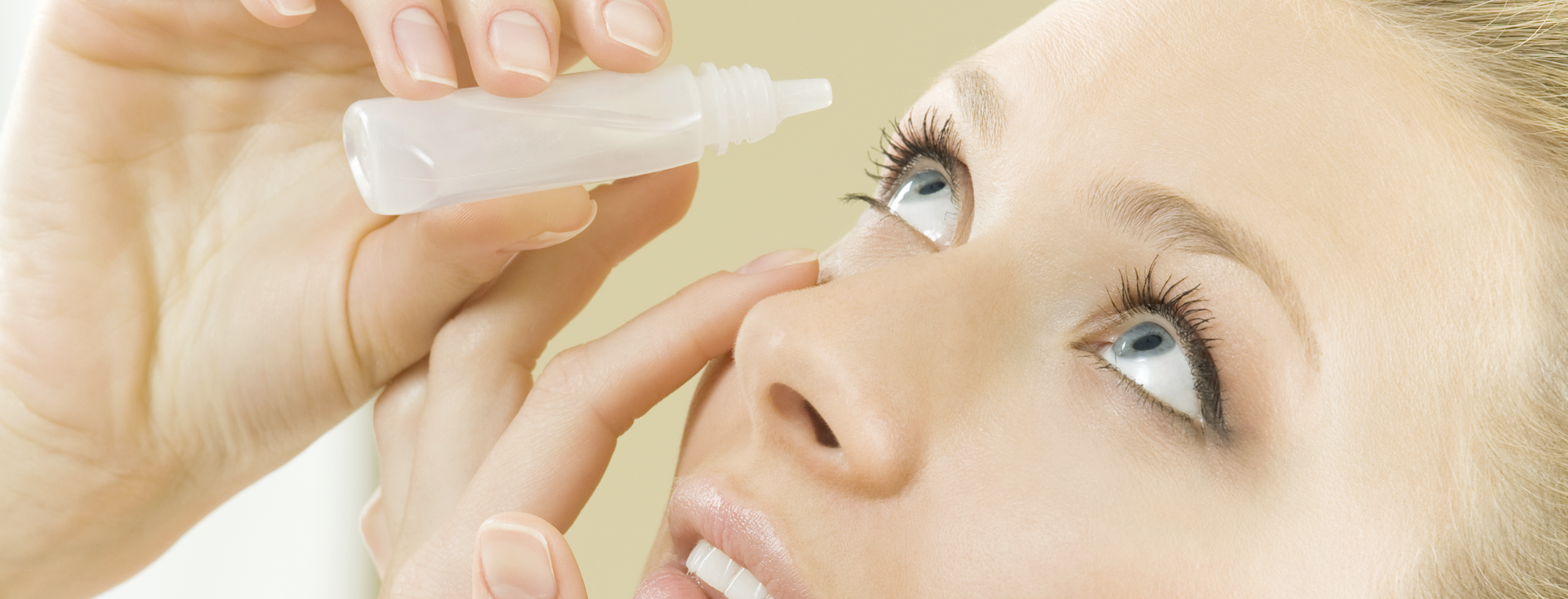
Surface tension as a basic parameter for controlling drop dispensing of ophthalmic solutions
About the relationship between drop volume and surface tension
Ophthalmic solutions and liquids (eye drops) are used to apply active pharmaceutical ingredients (API) directly to the eye. Surface tension measurement plays a key role for these solutions, as the surface tension is the only parameter manufacturers can control over a wide range that determines the droplet size. According to Tate, drop volume decreases with decreasing surface tension. The accessibility and significance of the surface tension makes it an important parameter for quality control (QC) measurements.
Background
Pharmaceutical drugs are most commonly applied to the eye in form of ophthalmic solutions (eye drops). The volume of the droplet determines the amount of active pharmaceutical ingredient (API) that reaches the eye. In this sense, controlling the volume becomes an important aspect of the application of eye drops. Drop volumes of 5 - 15 µL have been proven to be most efficient for drug delivery [1].
There are two parameters that define the volume of drops being dosed: the condition of the nozzle with respect to its material and design, and the surface tension of the liquid. From the engineering point of view, the design of the nozzle and its surface properties are frequently discussed. However, these are parameters the manufacturer of ophthalmic solutions cannot control. The dosing containers are bulk commodity mainly made of polypropylene. The inner and outer diameters of the orifice, as well as the surface properties of the container with regard to wettability, are predefined.
In terms of physico-chemical properties of the ophthalmic solution, the volume of the droplet mainly depends on the surface tension. According to Tate, in thermodynamic equilibrium between the bulk and the surface, the drop volume is directly proportional to the liquid’s surface tension [2]. This is a parameter manufacturers can influence by adding surface active ingredients and controlling the resulting effect with surface tension measurements. Therefore, the liquid’s surface tension is the parameter easiest accessible to optimize the dispensing volume.
Additionally, surface tension influences the break-up time of tear films on the eyeball. This is important because an elongated break-up time means a longer, more homogeneous exposition of the drug to the eyeball. It also enhances the comfort of the user when applying eye drops [3]. Therefore, the surface tension of ophthalmic liquids is an important parameter for quality control (QC) processes.
Results
In scientific literature, several studies investigating the influence of the surface tension of ophthalmic solutions on the volume of dispensed drops can be found [1, 4]. We plotted results as adapted from published data by Van Santvliet and Ludwig and obtained a linear correlation between surface tension and drop weight for dispensed eye drops (Figure 1). This is in good agreement with Tate’s description [2].

Summary
Eye drops or ophthalmic solutions are widely used to apply drugs to the eye. The amount of drug is regulated by the drop volume dosed. The main factor influencing the dispensed drop volume of ophthalmic solutions is their surface tension. We review results that show a proportional correlation between surface tension and drop weight for ophthalmic solutions. This makes surface tension measurements (by force tensiometer, drop volume tensiometer or pendant drop measurements for small sample volumes) an attractive tool for quality control of eye drops and ophthalmic solutions.
Bibliography
- [1] L. Van Santvliet, A. Ludwig, Dispensing eye drops from flexible plastic dropper bottles part II: Influence of the physico-chemical properties of the formulation and the manipulation technique by the patient, Pharm. Ind. 1999, 61, 194.
- [2] T. Tate, On the magnitude of a drop of liquid formed under different circumstances, Phil. Mag. S. 4 1864, 27, 176.
- [3] H. P. Dabrowski, A. Salpekar, O. W. Lever Jr. (Bausch & Lomb Inc.), Ophthalmic solutions for artificial tears, U.S. Patent 5,895,645, 1999.
- [4] L. Van Santvliet, A. Ludwig, Influence of the physic-chemical properties of ophthalmic viscolysers on the weight of drops dispensed from a flexible dropper bottle, Eur. J. Pharm. Sci. 1999, 7, 339.
As mentioned in this application report, a K11 Force Tensiometer had been used for carrying out some of the measurements. The same measuring methods, only with improved precision and ease of use, can now be performed with the up-to-date Tensíío instrument.



